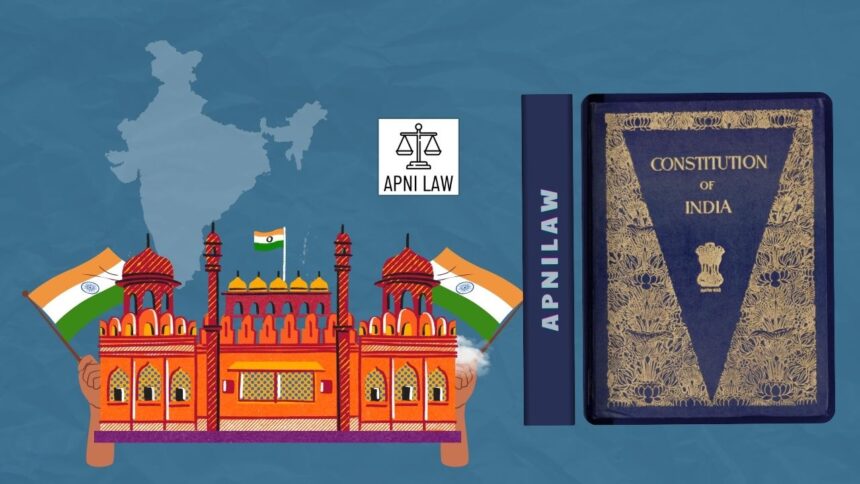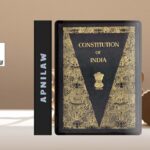The Prime Minister of India stands at the center of the country’s parliamentary democracy. This position represents the executive authority of the Union and ensures the functioning of the government in accordance with the Constitution. The Prime Minister acts as the head of government and serves as the main link between the President, the Council of Ministers, Parliament, and the people of India. The office is both political and constitutional, making it one of the most powerful positions in Indian democracy.
What is the Constitutional Basis for the Prime Minister’s Appointment?
The Constitution of India provides the foundation for the Prime Minister’s appointment under Article 75. The President appoints the Prime Minister, but in practice, the appointee is always the leader of the majority party or coalition in the Lok Sabha. If no clear majority exists, the President exercises discretion to appoint the person most likely to secure majority support. This ensures that the Prime Minister commands the confidence of the elected representatives of the people.
The Prime Minister must be a member of either House of Parliament, that is, the Lok Sabha or the Rajya Sabha. If the person appointed is not a member of either House at the time of appointment, they must secure membership within six months. This rule ensures parliamentary accountability. The term of the Prime Minister is not fixed. The Prime Minister continues to remain in office as long as they enjoy the confidence of the Lok Sabha. If the Lok Sabha withdraws its support through a vote of no confidence, the Prime Minister must resign.
How Does the President Appoint the Prime Minister?
The President plays a key role in the appointment process. In normal circumstances, the President invites the leader of the party or coalition with a clear majority in the Lok Sabha to form the government. However, in cases of a fractured mandate, the President uses discretionary power. The President must carefully evaluate which leader can form a stable government and command the trust of the Lok Sabha. Once the Prime Minister is appointed, the President also appoints the Council of Ministers on the Prime Minister’s advice.
This process shows the balance between constitutional provisions and parliamentary conventions. The appointment is not merely symbolic; it reflects the democratic principle that the executive should derive its legitimacy from the elected representatives of the people.
What are the Core Roles of the Prime Minister?
The Prime Minister serves as the head of government. This means the Prime Minister directs the Union Council of Ministers and coordinates administration across ministries. Policy formation, execution of laws, and governance all fall under the Prime Minister’s leadership. The Prime Minister ensures that government decisions are coherent and aligned with national priorities.
As the leader of the Cabinet, the Prime Minister presides over its meetings and decides the agenda. The Prime Minister allocates portfolios among ministers and has the authority to recommend their appointment or removal. This gives the office significant control over the functioning of the executive branch.
The Prime Minister also acts as the chief communicator between the President and the Council of Ministers. The Constitution requires the Prime Minister to keep the President informed of cabinet decisions and legislative proposals. This communication ensures harmony between the constitutional head of the state and the real executive authority.
How Does the Prime Minister Function in Parliament?
In Parliament, the Prime Minister plays a vital role. As the leader of the Lok Sabha, the Prime Minister advises the President on summoning, proroguing, or dissolving Parliament. The Prime Minister introduces government policies, presents legislative proposals, and defends the government’s actions in both Houses. This role makes the Prime Minister the face of the government within the legislature.
The Prime Minister also ensures that the government remains accountable to the people through Parliament. Since the Council of Ministers is collectively responsible to the Lok Sabha, the Prime Minister must maintain the majority’s confidence. If the Prime Minister resigns, the entire Council of Ministers collapses. This collective responsibility reinforces the Prime Minister’s central position in parliamentary democracy.
What is the Role of the Prime Minister in Crisis Management?
The Prime Minister is the country’s chief crisis manager. During national emergencies, wars, or economic crises, the Prime Minister provides leadership and direction. Decisions related to defense, internal security, and foreign affairs are coordinated under the Prime Minister’s authority. The Prime Minister also represents India in international forums, negotiates treaties, and maintains diplomatic relations. This dual role in domestic and international crises highlights the importance of the office in safeguarding the nation’s interests.
What Additional Responsibilities Does the Prime Minister Hold?
Beyond core executive functions, the Prime Minister also supervises appointments to key constitutional positions. These include the Governors of States, the Chief Election Commissioner, and other members of the Election Commission. The Prime Minister plays a role in recommending judges of the Supreme Court and High Courts in consultation with the judiciary through the collegium system.
The Prime Minister chairs important national bodies such as the NITI Aayog, the Inter-State Council, and the National Development Council. These platforms enable the Prime Minister to coordinate policies between the Union and States, promote cooperative federalism, and guide long-term development strategies.
How Does the Prime Minister Influence Policy?
The Prime Minister has unmatched influence in shaping national policy. From economic reforms to social welfare schemes, the Prime Minister sets the tone for governance. Through speeches, budget announcements, and cabinet decisions, the Prime Minister guides public policy. Major initiatives like liberalization in the 1990s or digital transformation in recent years reflect the Prime Minister’s role in responding to national and global challenges.
The Prime Minister also ensures that ministries work in coordination rather than isolation. By chairing inter-ministerial committees, the Prime Minister harmonizes conflicting policies and ensures efficient governance.
Why is the Prime Minister Considered the Face of the Government?
The Prime Minister is not only the head of government but also its chief spokesperson. Whether addressing Parliament, speaking to the media, or representing India abroad, the Prime Minister embodies the government’s position. This visibility makes the office central to political communication.
In democratic practice, citizens associate the success or failure of government policies directly with the Prime Minister. Electoral campaigns also revolve around the Prime Minister’s image, leadership, and promises. This explains why the office holds such symbolic importance in public life.
How Does the Prime Minister Balance with the President’s Authority?
The President of India is the constitutional head of state, but the Prime Minister is the real executive authority. The President acts on the advice of the Prime Minister and the Council of Ministers. This ensures that the elected representatives, and not an unelected authority, govern the country.
While the President enjoys powers on paper, in practice those powers are exercised only on the Prime Minister’s advice. This balance maintains the spirit of parliamentary democracy and prevents misuse of constitutional authority.
For any specific query call at +91 – 8569843472
Conclusion
The Prime Minister of India occupies the most pivotal position in the governance framework of the country. Appointed by the President but accountable to the Lok Sabha, the Prime Minister ensures that the executive functions under parliamentary control. The office directs policies, manages crises, communicates with the people, and represents India at the global level. The Prime Minister embodies both responsibility and authority, making the position the cornerstone of India’s democratic system.
The role is not limited to administration. It extends to political leadership, legislative guidance, and national vision. As the central figure of Indian democracy, the Prime Minister continues to shape the destiny of the nation through policies, decisions, and leadership.








